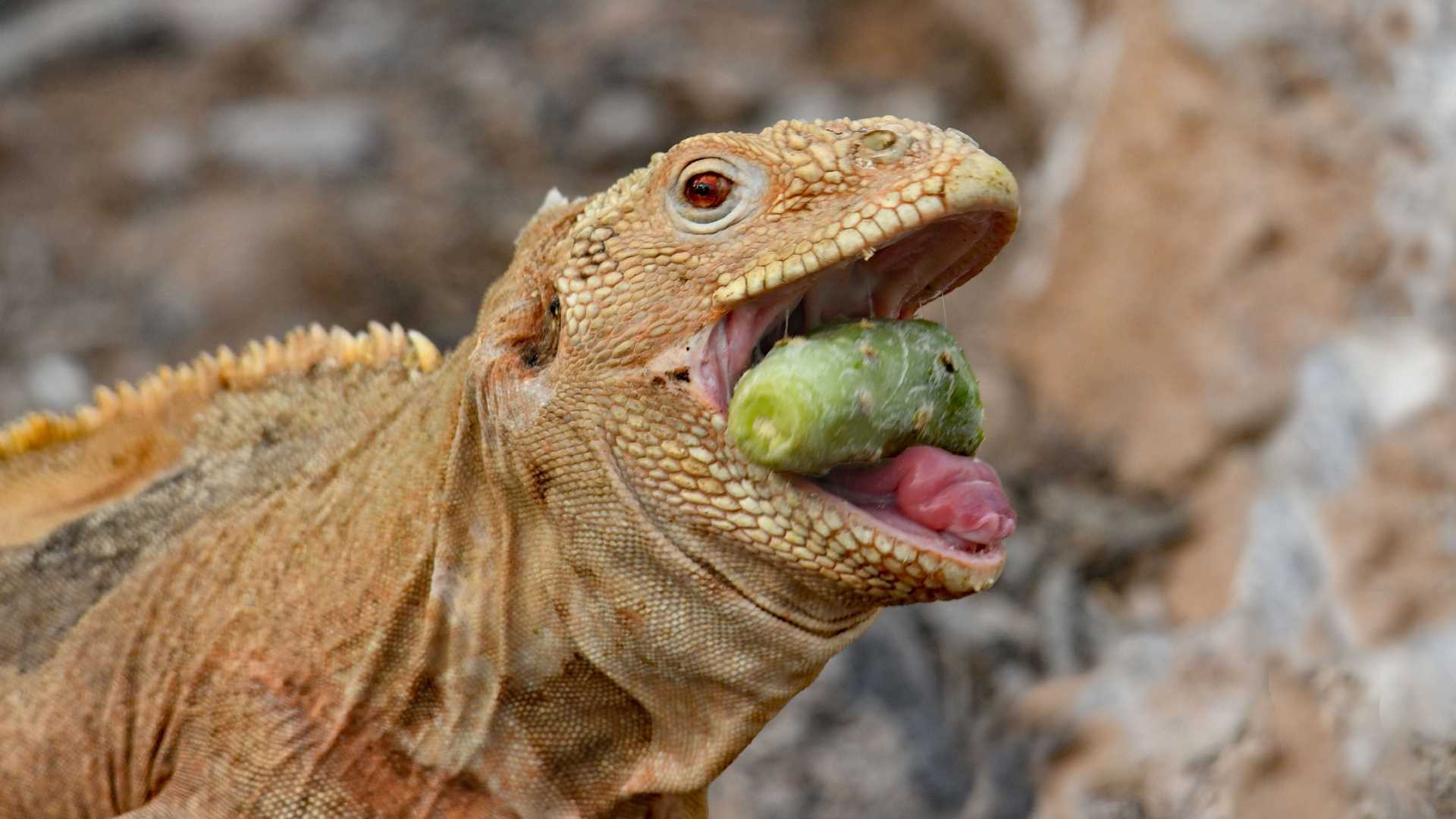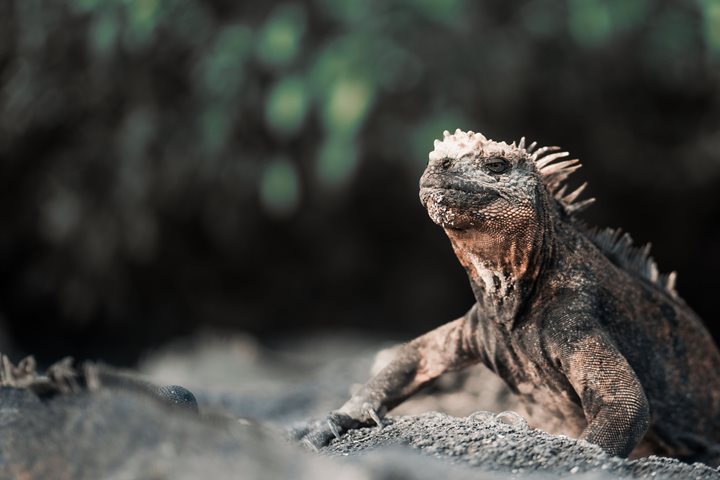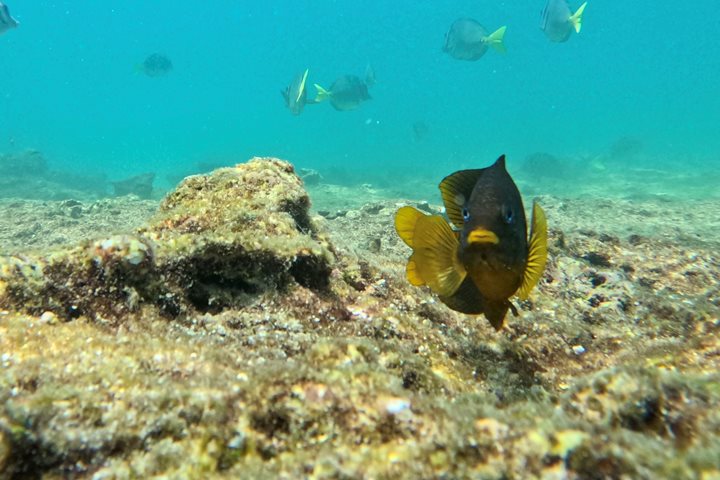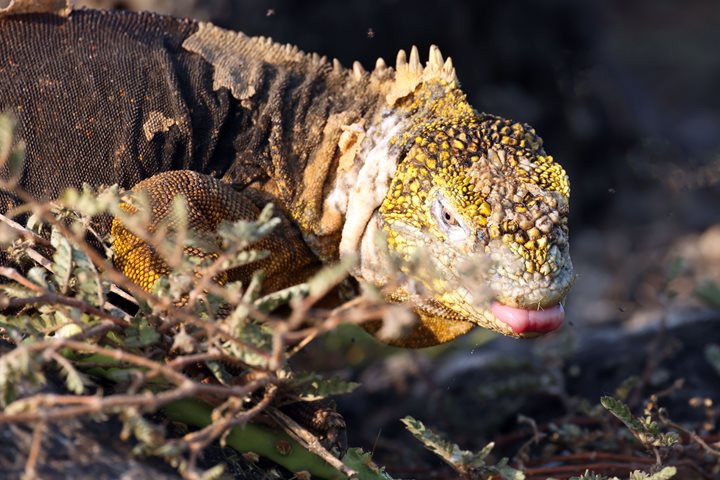Today was a wonderful day in the Galapagos Islands. We started early morning so we could enjoy the wildlife activity. After a delicious breakfast, we boarded the Zodiacs. Our first landing spot was a very small islet with many surprises. Yellow land iguanas were waiting for us at the landing area. We enjoyed discussing the habitat, behaviors, and interesting facts about the incredible reptiles, and we learned about their ecology. Swallow-tailed gulls were another highlight this morning. We spotted many breeding couples and enjoyed their friendly and tame behavior. We also observed sea lions and tropicbirds on our morning walk, and we enjoyed their sounds and colors. After our walk, we came back to the ship and set sail to a new island, Santa Fe. Our guests explored the island by kayak, and they also enjoyed the opportunity to snorkel. We observed many different species, including blue-footed boobies and playful sea lions, the stars of the show as they played in the water. For the rest of the afternoon, we went exploring by foot on a hike that took us through a prickly pear cactus and palo santo tree forest. Our goal was to find one of the unique species on this island: the Santa Fe land iguana. This species only lives here and is seen nowhere else in the world. The experience was complete after we saw their incredible feeding behavior. They mainly eat cactus on this island. We also observed a big colony of sea lions. They greeted us right at our landing! Finally, fast-moving lava lizards and even a Galapagos hawk were added to our list of wonders today!
- Daily Expedition Reports
- 28 Jul 2022
South Plaza and Santa Fe Islands, 7/28/2022, National Geographic Islander
- Aboard the National Geographic Islander
- Galápagos
Adriana Aguirre, Naturalist
Adriana was born in Guayaquil , the largest city in Ecuador, on the Pacific coast . When she was only a year old, her parents moved to Galapagos where her father captain ed a small bay - tour boat. She returned to the mainland to finish school, but t...
Read MoreShare Report
Peru and Galápagos Escape
VIEW ITINERARYRelated Reports
4/19/2024
Read
National Geographic Islander II
Sombrero Chino and Sullivan Bay, Santiago Island
Today we explored Sombrero Chino and Sullivan Bay, Santiago Island which are remarkably beautiful sites because of their impressive wildlife and landscapes. During the morning, we kayaked and snorkeled at Sombrero Chino Islet. In the afternoon, we moved to Sullivan Bay, where our guests had the chance to go for a Zodiac ride and a hike.
4/18/2024
Read
National Geographic Islander II
South Plaza and Santa Fe Islands
We are ready to set out early to explore the small and picturesque island of South Plaza. Here we find the endemic Galapagos land iguana, their reptilian features and colors stand out against the lava rocks and cactus forest. Swallow-tailed gulls nest right on and alongside the trail. Sea lions play in the water or rest under the bushes. On Santa Fe Island, we continue our excursions, this time with aquatic activities such as kayaking and snorkeling in the shallow turquoise waters of Santa Fe Bay. Sea lions, turtles, large schools of various fish, and rays are found. Later we explored by land to see the island’s land iguanas, finches, doves, and mockingbirds.







